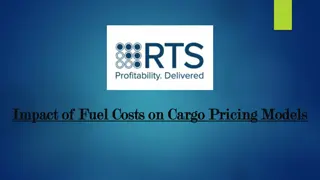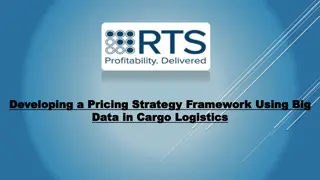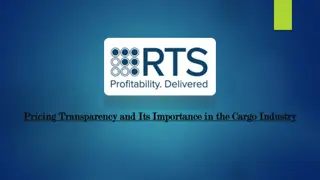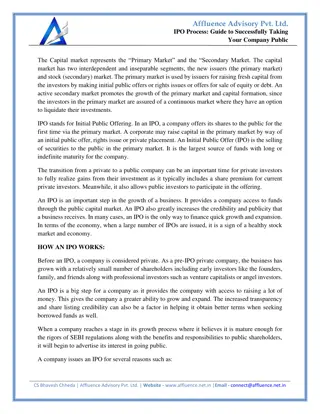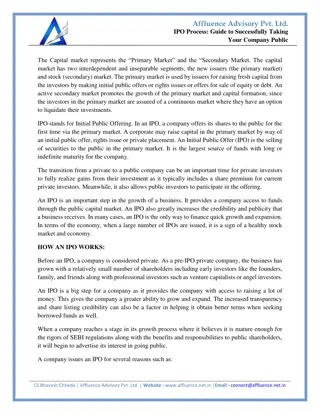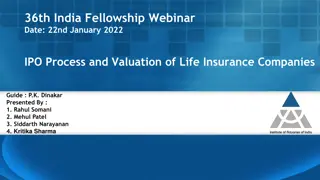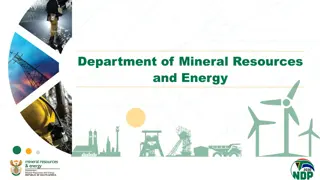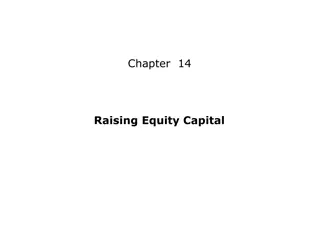
Insights on Pricing, Market Trends, and Valuation in the Business World
Exploring the dynamics of pricing agreements between buyers and sellers, market capitalization insights of companies like HUL and TCS, growth rates, valuation considerations for startups like Mamaearth, and key aspects impacting the financial landscape.
Download Presentation

Please find below an Image/Link to download the presentation.
The content on the website is provided AS IS for your information and personal use only. It may not be sold, licensed, or shared on other websites without obtaining consent from the author. If you encounter any issues during the download, it is possible that the publisher has removed the file from their server.
You are allowed to download the files provided on this website for personal or commercial use, subject to the condition that they are used lawfully. All files are the property of their respective owners.
The content on the website is provided AS IS for your information and personal use only. It may not be sold, licensed, or shared on other websites without obtaining consent from the author.
E N D
Presentation Transcript
BEFORE THAT LETS SEE PRICING Price is what a number at which seller and buyer has agreed to make the transaction Value can be more or less than the price Beyond the value of the company many other macro aspects drive the price
NOW A BIT ON MARKET IN GENERAL As on 2nd January,2023 Company Market Cap/ Valuation Annual Profits ril 17,44,073 infy tcs 11,93,948 hul (INR Crores) PE Ratio Growth rate PV of Future CF 6.56% 11.14% 6.18% 12.95% 46,139.50 22,437.21 38,477.23 9,457.00 37.80 28.59 31.03 63.51 8,88,010 4,31,831 7,40,541 1,82,011 6,41,480 6,00,614
HUL TCS Year Year Growth rate coc 12.52% 8,993 8,551 8,132 7,732 7,353 6,992 6,649 6,322 6,012 5,717 5,436 5,170 4,916 4,674 4,445 4,227 4,019 3,822 Growth rate coc 12.52% 36,589 34,793 33,085 31,461 29,916 28,448 27,052 25,724 24,461 23,260 22,119 21,033 20,001 19,019 18,085 17,197 16,353 15,551 277 264 251 7,40,541 7.00% 10,119 10,827 11,585 12,396 13,264 14,192 15,186 16,249 17,386 18,603 19,906 21,299 22,790 24,385 26,092 27,919 29,873 31,964 71,67,435 76,69,155 82,05,996 12,52,89,953 7.00% 41,171 44,053 47,136 50,436 53,966 57,744 61,786 66,111 70,739 75,691 80,989 86,658 92,724 99,215 1,06,160 1,13,591 1,21,542 1,30,050 2,91,61,779 3,12,03,104 3,33,87,321 50,97,60,899 1 2 3 4 5 6 7 8 9 10 11 12 13 14 15 16 17 18 98 99 100 1,82,011 1 2 3 4 5 6 7 8 9 10 11 12 13 14 15 16 17 18 98 99 100 68 65 62
NOW WE ARE GOOD TO SEE MAMAEARTH NOTE: VALUING A START UP LIKE THIS INVOLVS MANY LIMITATIONS ANALYSIS WITH LIMITED INFORMATION AVAILABLE WOULD NOT LEAD TO RIGHT CONCLUSIONS HENCE, THIS IS ONLY ACADEMIC DISCUSSION AND NO FINANCIAL OR OTHER DECISIONS TO BE TAKEN BASED ON THESE DISCUSSIONS
FEW GOOD THINGS ABOUT MAMAEARTH 14 crore to 1000 crores Revenue in 5 years 18000 pin codes servicing 6mn active monthly users 4X growth is 2021 2X growth in 2022 GP % - 60 to 70% - very good Not a hugely loss making company like paytm, Zomato, etc Sequoia is not participating in the exit now Valuation cannot be on Revenue or PAT multiple for start-ups There is lot of anger from paytm, Zomato, nykaa that was taken out on mamaearth Valuation not mentioned in DRHP but they allowed it to come out that was the issue??
FEW ISSUES OF MAMAEARTH 400 crores primary Vs 2000 crore secondary 20 times revenue and 1000s of times pat multiple Imagine what would be multiple if GP is treated as net revenue and compute multiple 1.2 bn to 3bn in one year Boat, Snapdeal, etc., backed out from listing recently Mamaearth is not a D2C but also an offline player 40% of revenue on marketing ROAS is very high about 2.4 to 2.6 This is not increasing over a period Funding winter
OTHER SPECIFICS Particulars H1 2023 FY2022 FY2021 FY2020 a. Revenue 722 943 460 109 a1 Annualized growth in a 53% 105% 322% Remark: Growth is reducing till now. Growth required in future is huge Reducing Growth Trend - How can revenue + profits increase with reduced ads spend? - What would be the roadmap and strategy? - This is typical roadblock for any D2C/cash burn company which failed to achieve clear Monopoly (or which failed to become amazon/google of its space)
OTHER SPECIFICS Particulars H1 2023 FY2022 FY2021 FY2020 Revenue Mix Ab]Online revenue 429 659 374 99 Composition of online revenue 59% 70% 81% 91% Annualized Growth in online 30% 252% 656% Remark: It is always known to be a D2C brand. Decline in online revenue composition is not a good sign. Once cash burn is stopped, growth could be a challenge
Reducing Growth Trend - Indicators Mamaearth is on the way to increased offline dependency (also backed by their plans to have exclusive brand outlet) How would it compete with legacy BPC brands like HUL and others, with no self manufacturing backing & no further cash to pump into the market ? And how would it deliver value to investors ? This should either come from exponential growth or premium margins - but are they really possible once cash burn stops?
OTHER SPECIFICS Particulars H1 2023 FY2022 FY2021 FY2020 Ac] Offline & other revenue 293 284 86 10 Composition of Offline Revenue 41% 30% 19% 9% Annualized Growth in Offline 106% 560% 1620%
Online gross margins would be higher Reducing Growth Trend - Indicators But come with heavy marketing + platform costs There are no Indian or proven d2c brands yet in any space which delivered better ebitda than legacy offline players for same product category So overall d2c efficiency itself is not yet proved. Plus, recent trend is all d2c are on offline way. Mamaearth brand survival would be at test once cash burn stops, and it stands naked in line with HUL/legacy offline players and Nykaa home BPC brands/likes One must realize that entire game of d2c/tech startups is to build the brand and achieve near monopoly - which may be only way of survival - but will public market bet its money for this game?
OTHER SPECIFICS Particulars H1 2023 FY2022 FY2021 FY2020 B] Gross Profit 510 660 327 73 GP % 71% 70% 71% 67% Remark: Manufacturing is outsourced - sales revenue not the best metric for valuation. GP/ Net Revenue to be used instead.
OTHER SPECIFICS Is it correct to compute value using Revenue multiple applied on base revenue for a company which self proclaims their core is brand and has no manufacturing setup? Would it be better to apply on GP if we really want to compare with value of other BPC companies? Typically, in any M&A valuations of these type of companies GP multiple is used
OTHER SPECIFICS Particulars H12023 FY2022 FY2021 FY2020 C EBITDA 13 11.4 -1334 -431 EBITDA % to Revenue 1.80% 1.21% -290% -395% EBITDA % to GP 2.55% 1.73% -408% -590% Operating margin also should be measured as a % of GP not on base revenue for sake comparison. However, in this case anyway margins are so thin no inferences can be drawn from either
OTHER SPECIFICS Particulars H12023 FY2022 FY2021 FY2020 E] Contribution of new SKUs in revenue growth 44.12% 43.17% 38.75% -- Remark: New products are good but more contribution from new products means repeat from the existing products is not much Introduction of new products into market comes with incremental advertisement spending specially for companies like mamaearth which are still very new to offline distribution network Unlike HUL/others which can manage new product launch with celebrity adds and distribution channel push What would be the cost of intro new products for mamaearth and how can growth + profits sustained would be key Is this Good/Bad?
OTHER SPECIFICS Particulars H1 2023 FY2022 FY2021 FY2020 F Advertisement Spend 271 391 ROAS Remark: i. ii. 2.66 2.41 ROAS is very low & Primary funding is also not big - only 400 crores How would the growth in sales be achieved ? - is a mystery If calculated on total revenue? This is way lower than industry average (roughly 7 for Nykaa and 10 for HUL) Currently ask of mamaearth from fresh issue for ad spend is just less than annual spend? With not so high cash balance and annual margins - is the company planning to rely on WC debt for future operations? Is it wise to debt for marketing spend though its WC it is too risky since outcome is outside of company's hands?
OTHER SPECIFICS Particulars H12023 FY2022 FY2021 FY2020 ROAS [only on online revenue] 1.58 1.69 Remark: ROAS much lower if computed on online revenue alone
OTHER SPECIFICS Particulars H12023 FY2022 FY2021 FY2022 G] Sales Commission 16.13 28.68 Sales commission to online sales % 4% 4% Remark: i. There is also possibility that net revenue presented is net of commission as commission is disclosed separately - they must follow uniform policy) Sales commission to online sales is generally in the range of 10 to 15%. Anytime amazon and other platforms can increase this from current 4%. That will drastically erode their margins ii.
OTHER SPECIFICS Quick Insights Assuming this is platform commission - it is only 4% in comparison average market rate of 10%-15% (charged by Amazon, Flipkart, Nykaa to any d2c brand excluding exclusive banner fee and warehouse fee). This indicates that these platforms are giving huge commission discounts to mamaearth- being a high-volume trader. If this is true - its a huge risk! Once these platforms decide to charge market benchmarked commission to mamaearth then profits/revenue will completely erode (or by introducing competing products) This position is like BOAT. Though this is all assumptive analyses, Mamaearth failed to explain this 4% as a differentiator or risk in DRHP despite of backlash BOAT received for similar point
OTHER SPECIFICS Particulars H12023 FY2022 FY2021 FY2022 H Trade Receivables 142 72 DSO on total sales days 35.40 27.87 DSO on offline sales days 87.24 92.54 Remark: DSO seems to be high due to inflated offline sales numbers or another possibility is that sales from sale or return basis is taken as fulfilled sales Offline Sales! Considering nature of business and increase in trade receivables in comparison to offline sale growth indicate that cash recovery from offline business is very low This creates doubt on offline sale number itself DSO for offline and online sales should have been explained in DRHP
OTHER SPECIFICS Particulars H12023 FY2022 FY2021 FY2022 I Trade Creditors 227 166 Expenses except emp cost 634 856 DPO days 64.45 70.78 Remark: This seems to be the best bargain they may have got from contract manufacturers - potentially creditors ratio will go up in future Very High Creditors Balance ! Are these credit terms usual and what is risk in this?
OTHER SPECIFICS Other Points to be Noted DRHP mentions risk of high reliance of revenue on few products - what is the profitability mix and what are risks associated with product profitability mix? This Should have been explained - considering neck tight competition and easily replicable product profile Average order value of Mamaearth would be INR 200 approx addressable market for this would be very low with very low repurchase rate when compared to low-cost products of HUL in shampoo and beaty range (this should have been explained with addressable market metrics) mamaearth is typically urban centric brand Platform revenue mix should have been given in DRHP - if they are heavily dependent on other platforms like amazon, Nykaa (which is most likely) it s a huge risk










